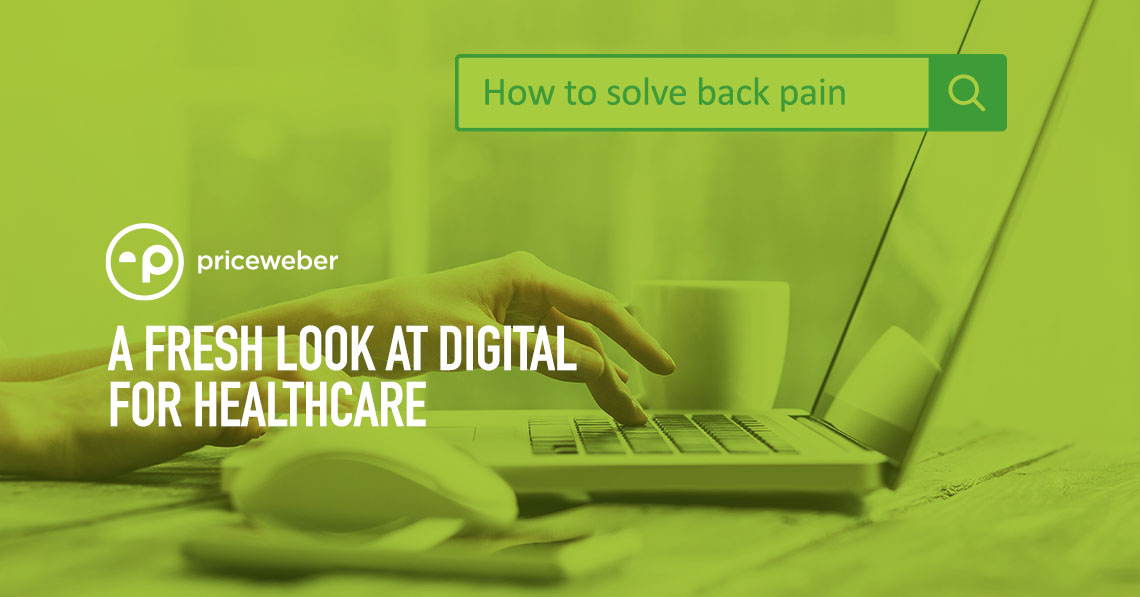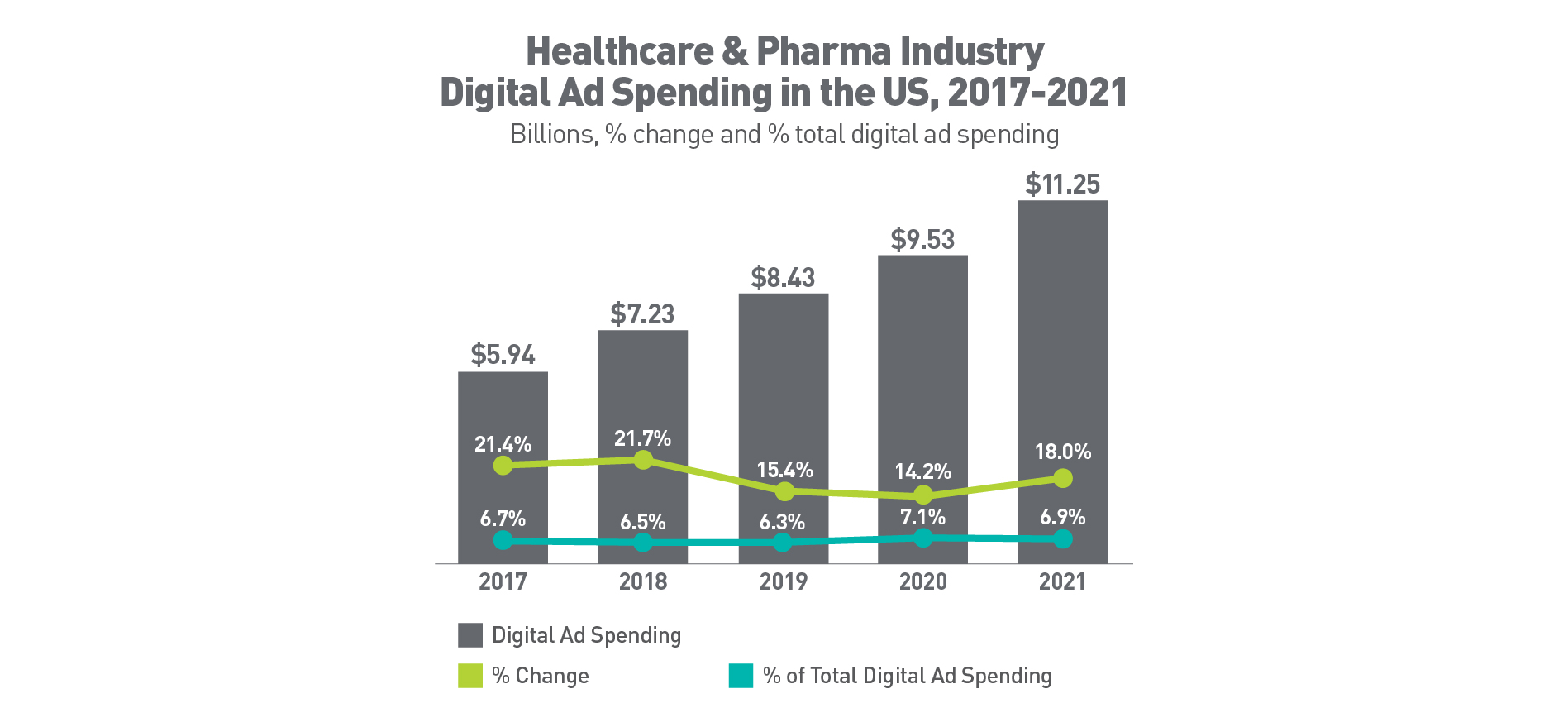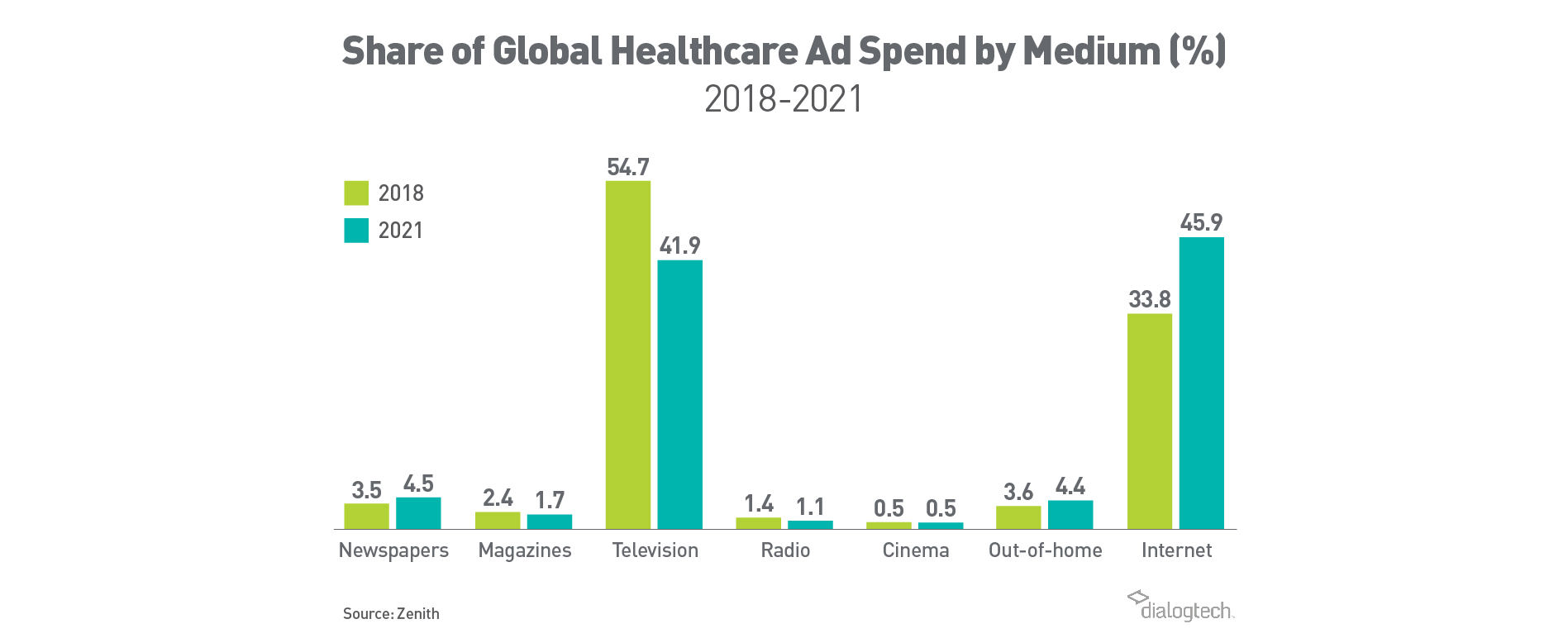The healthcare industry has been slower to accept and embrace digital in the past, and it’s not completely their fault – there are federal privacy regulations, and other challenges have made traditional advertising more appealing. In addition to traditional marketing, healthcare providers also made good use of in-office marketing tactics. But with COVID-19 and the loss of some point-of-service marketing tactics, digital spending grew 14% in 2020 for the healthcare and pharmaceutical industry, and they expect it to grow another 18% in 2021. In this edition of Plain Talk, we’ll look at how and why healthcare providers are increasingly looking to digital strategies to bolster their marketing efforts.
Where Healthcare Spends
So where is the healthcare industry spending? Unsurprisingly, healthcare and pharma still globally spend big on TV, but in 2021, digital spending is set to significantly surpass TV or any other medium, with the majority of that money spent on paid search. Reaching people who are looking for a doctor or specialty care (whether that’s a pain clinic, children’s therapy or at-home care) just makes sense. If a prospective patient or employment candidate is actively seeking information, it’s not a bad idea to concentrate some of your marketing spend there. Display and video make up the rest of the spending for most healthcare marketers.
If you aren’t already successfully using digital for your healthcare marketing plans, you are late to the game. For more about search, check out this article. Today we’ll talk through a few additional tried-and-true options to ensure your spend not only reaches your desired target audience but also drives results (new patients, new appointments, etc.)
1. Targeted Lists Improve Results While Limiting Costs
Using a targeted list, whether from 1st party data (data you have collected from your CRM) or purchased from a 3rd party can allow you to go beyond email and direct mail to target potential patients on search, display and even social media more effectively. By uploading lists with email addresses (or in some cases physical mailing addresses), various platforms including LinkedIn, Facebook and Google can find and target specific people on their platforms. Moreover, online platforms can identify characteristics and behaviors of those on the uploaded list in order to find similar people for additional targeting capabilities.
These campaigns are extremely targeted and have been shown to result in higher user engagement with a lower cost per desired action. The key is to use a well-vetted list. For example, if you are recruiting nurses, a list from a select state’s Board of Nursing would allow you to focus in on people with specific qualifications. Or if you are a specialty doctor’s office that relies on referrals from primary care offices, you can upload a list of specific practices and primary care doctors.
2. Contextual Advertising Let’s You Reach People in Various Stages of Research
While it’s probably not recommended by a doctor, people tend to look up information on the internet when they aren’t feeling well. This makes search an ideal location to advertise so that your brand is visible in the space where people are searching for answers or solutions. Contextual advertising can complement these search efforts by putting your messaging alongside relevant content that users will click through to and read. We also know that contextual advertising actually increases brand favorability. If you are a pain clinic, articles that talk about what to do about back pain, or when to be concerned if you have a headache, are perfect places to promote your practice.
3. Video Is an Opportunity To Make an Impact
Video is under-utilized in the healthcare space, particularly since so many healthcare marketers rely on traditional media, including television, to advertise. It is the smallest portion of most advertisers’ budget, but it can be extremely impactful from a reach perspective. We’ve seen success over the years using video as part of our overall campaign strategy – spreading a general message to a larger online audience and then retargeting those who interacted with and showed interest in the video content with display or social ads. If you are a children’s therapy center, developing content can convey not only your expertise but also your passion and level of patient care. If you have a state-of-the-art facility, show, don’t tell, in a way that will resonate with potential new patients.
4. Don’t Forget About Social Media, Reviews and Other Touchpoints
Upping your social media game is a critical way to communicate with people in the industry (potential future hires) and the community. One aspect of social media increasingly critical to healthcare decisions is the use of reviews. In fact, in one recent survey, 82% of respondents reported using reviews from sources like Google, Healthgrades and Yelp to help them make healthcare decisions. Yet review management can often be overlooked by providers.
Having a good review management program in place is a critical element to improving your brand’s reputation on the same Google results page that people are using to find a new primary care doctor or specialist. While people are searching online, they are going to come across reviews, and the number of positive vs. negative reviews will be a deciding factor in whether or not they trust you to care for themselves or a loved one. A review management program can help you generate additional reviews, building up the positive feedback from current patients.
Got Questions?
Hopefully this article gave you some great ideas for where to start in upgrading your digital marketing plan, but if you still could use some advice, we’re here for you. Just give us a call at (502) 499-4209 or drop us a note here, and we’ll get you on the right path.




